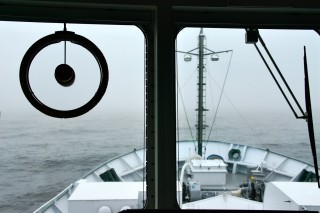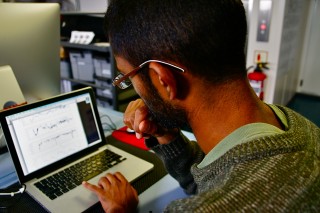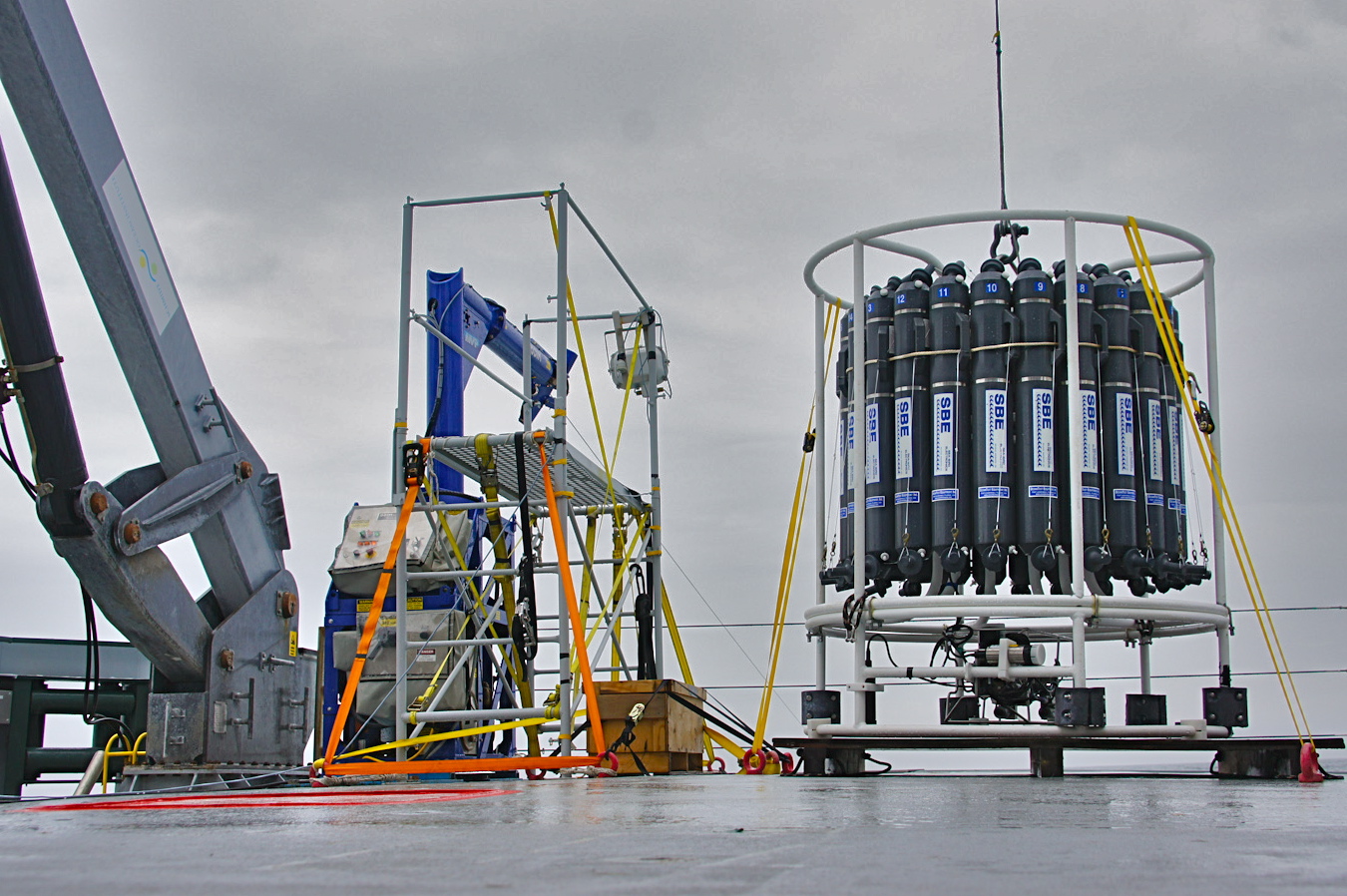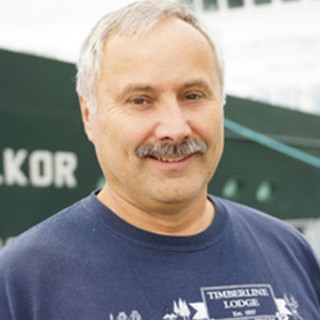Today the edits to the plan were minor, and we have started our final push. The weather is grey, with low clouds, irregular seas, and cool temperatures. The forecast calls for an increase in the SE wind. The MVP remains in the water nearly all day, with periodic checks on the fish to inspect for kelp and wear. Our adaptive sampling has a few days left to map some of the key features one last time.

The majority of oceanographic cruises I have been involved with have been one of two varieties. There are ‘home-institution’ cruises, which include Ocean Networks Canada’s maintenance cruises, where a well trained team of co-workers head out several times a year, with fairly well developed and understood plans, procedures, and responsibilities to recover, service, and redeploy oceanographic moorings and platforms. There are similar maintenance, monitoring, or routine programs at many oceanographic institutions, where the cruise tasks and the crew are familiar and execution can be routine and straightforward.

Then there are cruises that have mostly new participants, involving collaborations across institutions and disciplines, and a science plan that is likely innovative and somewhat unproven. This Falkor cruise is of the latter variety, and it has a distinctive character that will remain with us for many years to come.
Among the science personnel, most of us have known each other professionally for many years, or even decades. But this is the first major field program together for this group, which includes leading physical, chemical, and biological oceanographers—the major branches of water column ocean science.

A special mention of the interactions we’ve had and a flavor of the discussions directing our science program on the ship. Although I am keeping more or less regular working hours (07:00 to 23:00), the remainder of the science team is split into two teams, working 12-hour watches, switching at 03:00 in the morning and 15:00 in the afternoon/evening. So, between roughly noon and 18:00, the entire science brain trust is both up and engaged, and this is when we discuss the data and what our next steps should be.
Always pressing is the need to interpret the latest section, transect or frontal crossing to figure out what the data are revealing. Is there a new feature? Do the data confirm our most recent hypothesis? How do they guide us for the next turn, the next transect, and the next survey?
We discuss published papers from this region, hash over the layers of physics working this water at this very minute, assess the fine details in the data, and negotiate what we should do next. It is science at its most fun and challenging. We are mindful of the significant logistical effort provided us to be free explorers.
The program we are executing would not be possible without the tireless assistance of our technical and graduate student teams. When we are doing CTD and bottle casts, each one has a designated task and responsibility, conscientiously executed. During MVP surveys everyone participates in a demanding one and a half hour shift, called a “watch”, intently monitoring dozens of real-time displays and indicators, ready to hit the big red “stop” button if something goes awry.
These intense monitoring duties are interspersed with a brief reprieve of an hour or so. When we mobilize for an MVP or CTD deployment or recovery, it is all hands on deck or to station. Most of this group I have not worked with before, but some collaborations span my entire professional career. Chris Mackay built the microstructure profiler I used for my thesis work thirty years ago, and was on many of my first cruises starting in 1984.
When we first boarded the ship, some two weeks ago, we went out for an evening together in Nanaimo to get to know one another. Since then, the entire science team has gotten to know each other even better and together they’ve shown commitment, dedication, and hard work in executing our science plan. When we get back to Victoria, it will be hard for us to watch our team disperse to our homes, friends, and loved ones.

